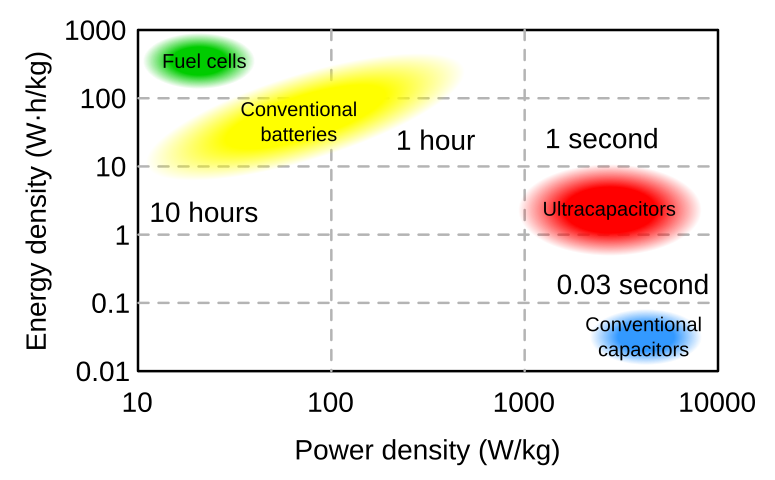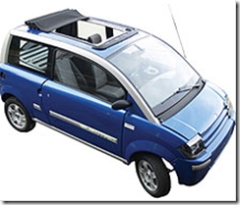
General Motors has announced it will work directly with A123 Systems, a start-up based in Watertown, MA, to develop batteries that are fine-tuned for the Chevrolet Volt, an electric vehicle scheduled for production in 2010 or 2011. The new agreement between the companies is designed to speed the vehicle to market.
The co-development deal is the latest in a series of announcements by the automaker indicating it is moving forward with plans for the Volt, an extremely fuel efficient hybrid. The Volt, first announced in January, will use batteries that can be recharged from a standard electrical outlet and is expected to get 40 miles on a single charge, eliminating trips to the gas station for average daily driving. While GM has not ruled out using batteries from another supplier, the agreement is a vote of confidence that A123's technology can meet the requirements for the vehicle, says Denise Gray, GM's director of hybrid energy storage devices.
A123 uses a new lithium-ion chemistry that allows its batteries to be much lighter and more compact than the nickel metal hydride batteries in existing hybrids today, and safer than the conventional lithium ion batteries found in consumer electronics. In June GM announced that it is working with the South Korean company LG Chem, and its subsidiary Compact Power, based in Troy, MI, to make both battery packs and the individual cells inside them. They also signed an agreement with an LG Chem competitor, the Frankfurt, Germany-based Continental Automotive Systems, to develop battery packs. Continental had planned to use A123 as a subcontractor to supply the batteries for these packs. The new agreement puts A123 in direct contact with GM on the Volt project.
At the end of 2005, A123 announced its first product, a cylindrical battery for power tools. For the Volt, A123 is shifting to a much bigger and flat, rather than cylindrical, battery cell that takes up significantly less space. Hundreds of these would be combined in a large pack, with control electronics and a cooling system, to power the Volt.
A123 employees have begun testing the new cell. In one test, a prototype cell, a silvery slab about the size of three decks of cards placed side by side, was crushed from the side to demonstrate its abuse tolerance. Unlike conventional lithium-ion batteries, which use a cobalt-oxide material that can overheat and cause laptops and cell phones to burst into flame, A123's batteries use a much more stable, and potentially cheaper, iron phosphate material. The crushed test battery showed no signs of overheating.
Earlier this year GM had picked A123 Systems as a potential supplier of lithium-ion batteries for a new version of its Saturn Vue hybrid that can be recharged by plugging it in, giving it a 10 mile all-electric range. It could be on the roads as early as 2009.
But the battery requirements for the Volt are much more challenging, requiring the different cell design. Whereas in the Vue power from the battery will be supplemented with power from a gasoline engine, the Volt will rely on batteries full-time. For the first 40 miles of driving, the battery will deliver power from being plugged in overnight. After that, the battery will continue to power the vehicle as it is recharged by an on-board gasoline-powered generator.
The new batteries must pack more energy into a smaller space, the reason for the flat design. But they also need to be fine-tuned for the power demands of the Volt. To do this, engineers can subtly alter the electrode chemistry, thickness, the type of electrolyte, and other aspects of the battery cell design. The collaboration with GM will give A123 direct access to more lab space and testing equipment that could allow A123 to more quickly sort through many subtle variations on the cell design, says David Vieau, A123's CEO. "You never get enough test capacity for all of the different variations you'd like to be able to consider," says Vieau. "We hope this [agreement] will accelerate the process."
Gray says GM hopes to have the batteries in packs within the next couple of months and to have these packs in a generic vehicle platform for testing by the end of the year. The technology could be in a prototype Volt sometime next spring, she says. GM's goal of a production model by 2010 or 2011, Gray says, is an "aggressive target." But the tests they've done so far since announcing the project in January have been encouraging. "We've got no information back that says uh-oh we can't do this," Gray says.
The Volt is going to be about the size of a Chevrolet Cobalt, which currently costs between $14,000 and $20,000 depending on the configuration. Rob Peterson, a GM spokesperson, says GM won't "price themselves out of that class" of vehicles with the Volt. He adds that if GM intended the vehicle to have a hefty premium, it would have made the vehicle a Cadillac. "It was a conscious decision to make it a Chevy," he says.
The agreement with GM does not mean that A123 will be locked out of doing work with other automakers. The specific cell the two companies develop together will be co-owned--so both companies will have to negotiate for how it might be used, Gray says. That could include putting the pack in cars by other companies, Gray says, since "it's in everyone's interest to achieve economies of scale to drive down battery prices." A123 still retains control over its novel battery chemistry, however. Indeed A123 has had discussions with other automakers and its batteries are set to be used in hybrid buses starting in 2008.




